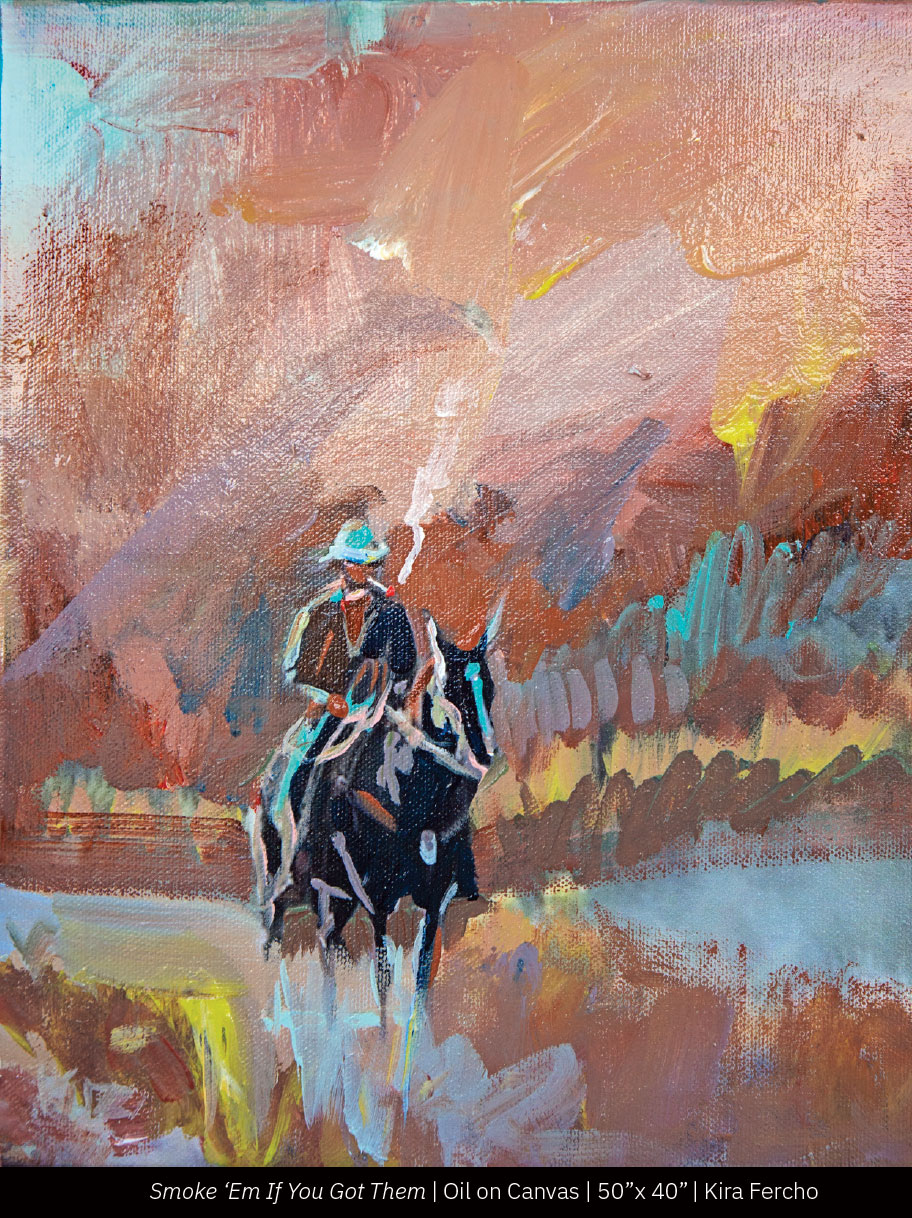Evolution of an artist
The Vernacular of Kira Fercho
by Michele Corriel
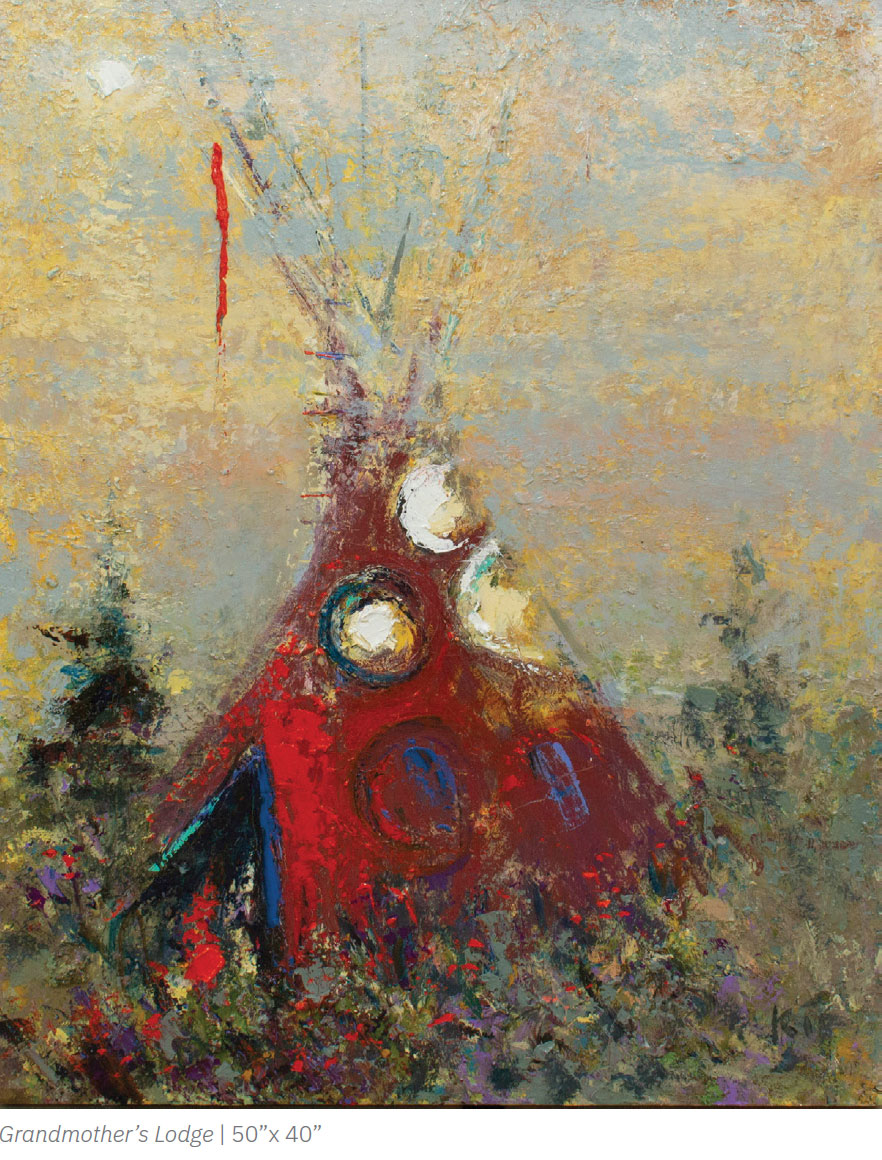
Kira Fercho’s vernacular combines subjects she knows deeply, from years of study and decades devoted to perfecting her discipline. With early successes, Fercho began to accumulate collectors, galleries, and museum shows—an impressive resume, by any standard.
“What I want people to understand is that I have a whole team behind me,” she says. “I have four employees, who take care of shipments, track dates/calendars, and manage my media marketing. I just hired someone to run my warehouse that we are turning into a gallery. Showings are by appointment only. Interior designers can see my work and not have to go the studio.”
Fercho’s work, recognizable from a distance, combines color, texture, and composition in a way that is uniquely her own. Because she lives her work, the horses, bears, and landscapes that she paints echo her surroundings. This kind of intimacy with her subjects enables her to reach beyond the merely visible and get to the heart of the subject. And it is this ability that collectors and gallerists both see as one of her strengths. Her work connects the dialogue between contemporary art and Western culture.
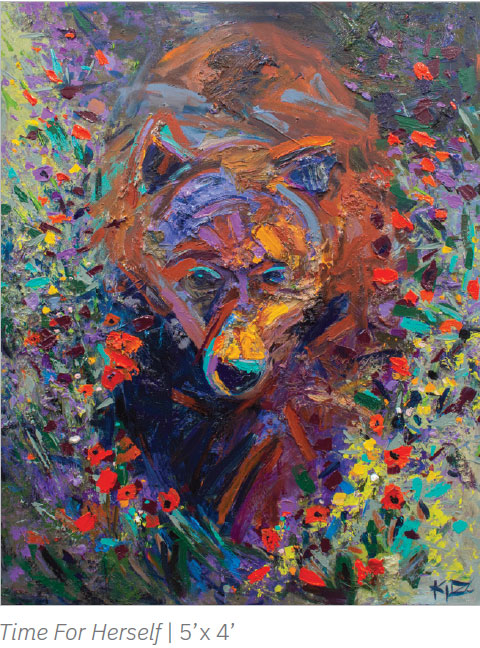
“I’m at that midlife point, having painted since I was a teenager,” Fercho says. “I’m very confident in what do, and the life and culture I grew up around. Personally, I don’t want to run out of the love for what I’m doing, and I won’t if I’m painting the parts of my life that I know.”
“Personally, I don’t want to run out of the love for what I’m doing, and I won’t if I’m painting the parts of my life that I know.”
–Kira Fercho, Artist
Betsy Swartz, of Betsy Swartz Fine Art, has been working with Fercho for about 10 years.
“In the beginning she was really known for her aspen trees, and she would have bright colors in the trunks of the trees,” she recalls. “Kira’s pieces were so bright, and the paint was applied in such a thick way. People gravitated to her because her pieces were so happy.”
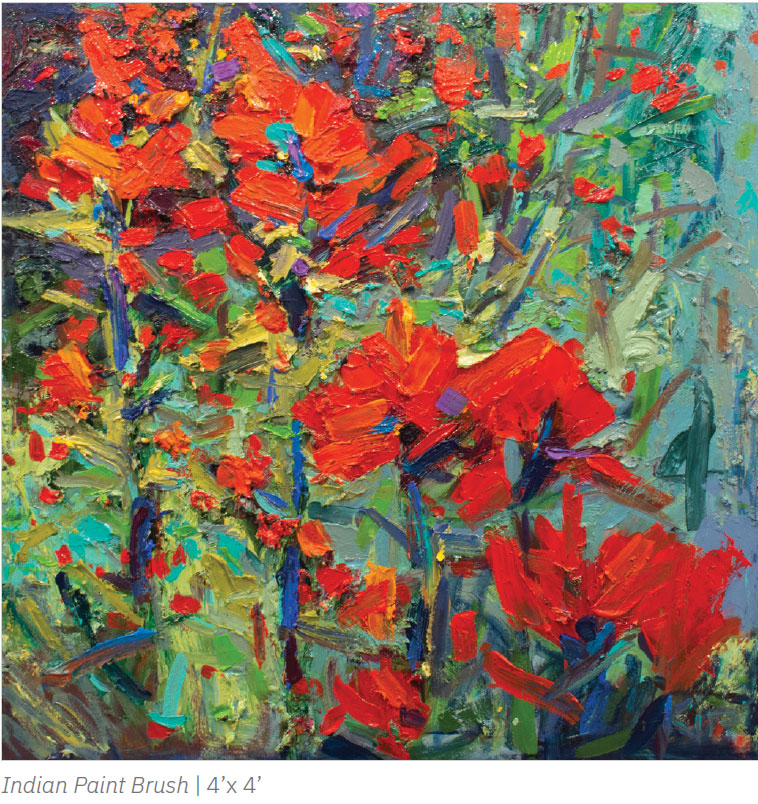
With those early successes, she added tipis, horses, and wildlife to her visual vocabulary.
“Her paintings really change a room,” Swartz says. “The way I approach selling is that I call myself a matchmaker. I intuit what clients are trying to create in their homes and I play matchmaker. For example, if they are trying to incorporate nature, something like bringing the outdoors inside, Kira’s trees feel like we’re creating a window with the painting. On the other hand, her tipis bring a peaceful feeling to a room.”
Swartz notes that people respond to the way she paints without frames, “She’ll paint the edges with accent colors, to add another dimension to the work.”
These types of details place Fercho firmly in the artworld, not just in Montana but in many other parts of the country as well.
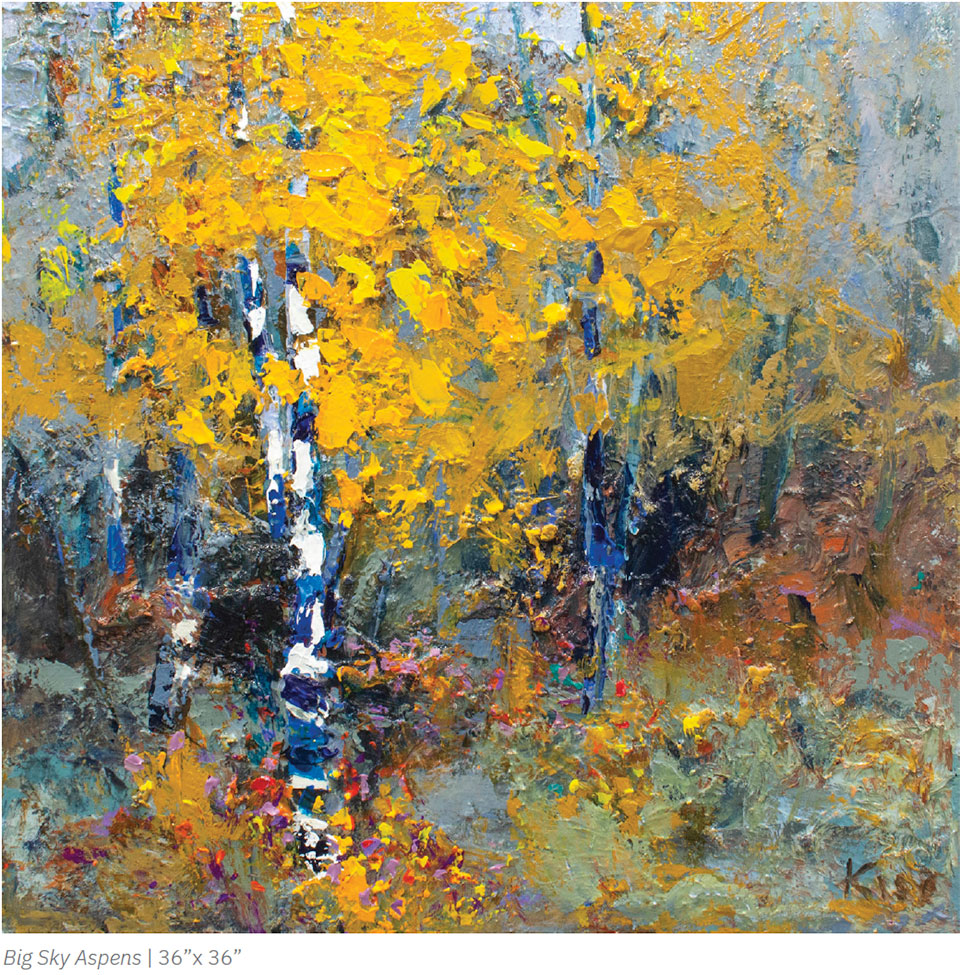
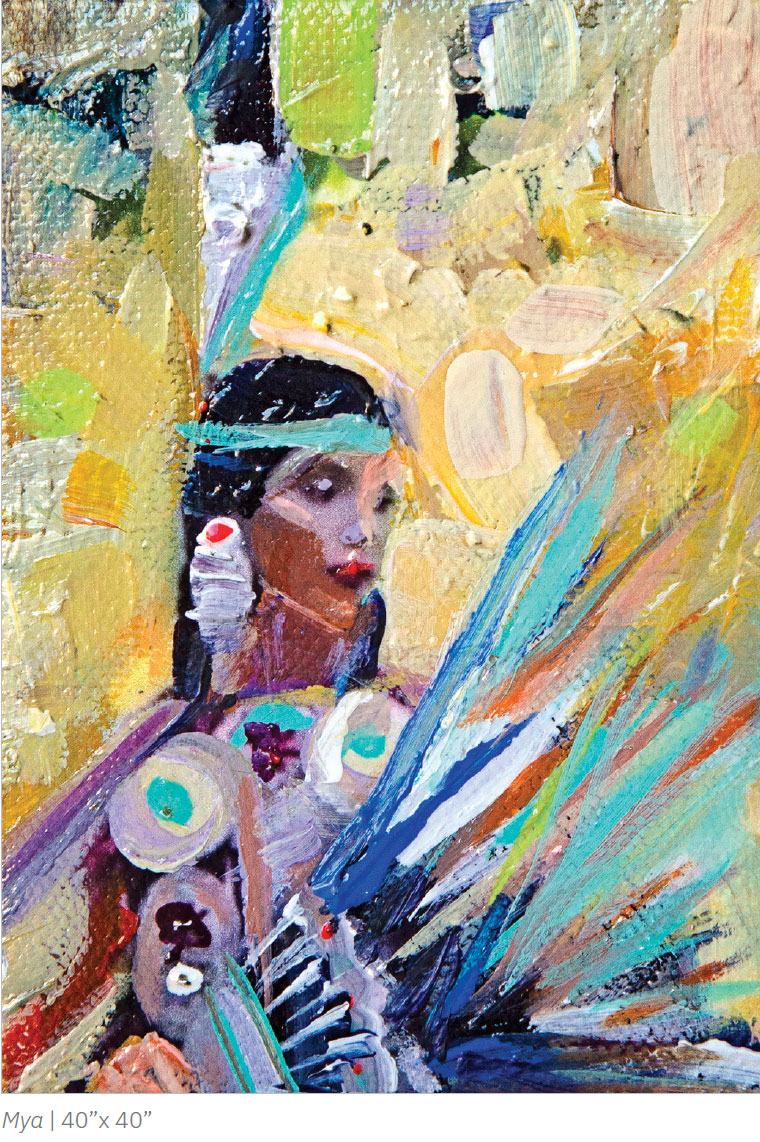
“She’s a contemporary painter who explores and expands the Western genre,” Swartz says. “Her work covers the type of subjects Western paintings typically cover, for example, tipis, wildlife, and landscapes, but she approaches her subjects with a thick palette and she’s not afraid of colors, so that plays into her place in the Western art world.”
Fercho’s talent to push boundaries, to explore the characteristics of paint, and to experiment with color comes through in her work.
“She’s expanding her subject matter and her handling of paint,” Swartz says. “She has a lot to say, about life in general, and she does that through the thick layering of paint, like a lot of words landing on the canvas. She knows life is precious and she wants to make the most of her career.”
In Fercho’s painting Indian Paintbrush, the pure audacity of the red jumps from the canvas. It is not a still life, with a staid voice meant for a dining room; instead it is a statement about Montana, about the West, about the thick lushness of life and the undeniable splendor in nature. The abstracted brushstrokes and cacophony of hues express the pure wildness of a mountain landscape.
“In the beginning she was really known for her aspen trees, and she would have bright colors in the trunks of the trees. Kira’s pieces were so bright, and the paint was applied in such a thick way. People gravitated to her because her pieces were so happy.”
–Betsy Swartz, Betsy Swartz Fine Art
Dick Idol gallerist and Bozeman Art Museum board member Mimi Moser thinks that Fercho’s work can hang alongside classical Western artists or flat-out contemporary abstract art.
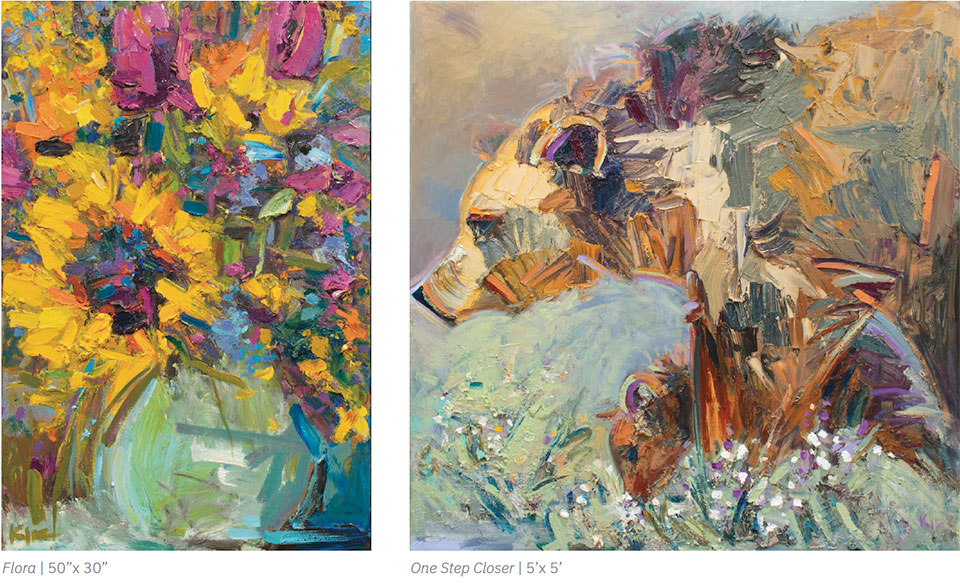
“With Kira it’s a subtle and sophisticated approach that stands on its own but doesn’t take over,” Moser says. “It’s an elegant style, not really words you hear attached to contemporary art. Kira’s ability to marble color is extraordinary and clearly there’s the texture; it’s one of the most satisfying things about looking at one of her paintings. You’re not going to miss that, but it’s not just that. I think that her figures and the color create an atmosphere.”
For Moser, it’s Fercho’s quality to be part of a continuum of style that represents the West.
“And yet her paintings are unique unto themselves,” she says. “To put it in perspective, when giving one of her paintings as a gift, you wouldn’t have to worry that it wouldn’t go in a home. That’s how subtle her pieces can be, yet they’re so powerful. They light up a space. Just spectacular.”
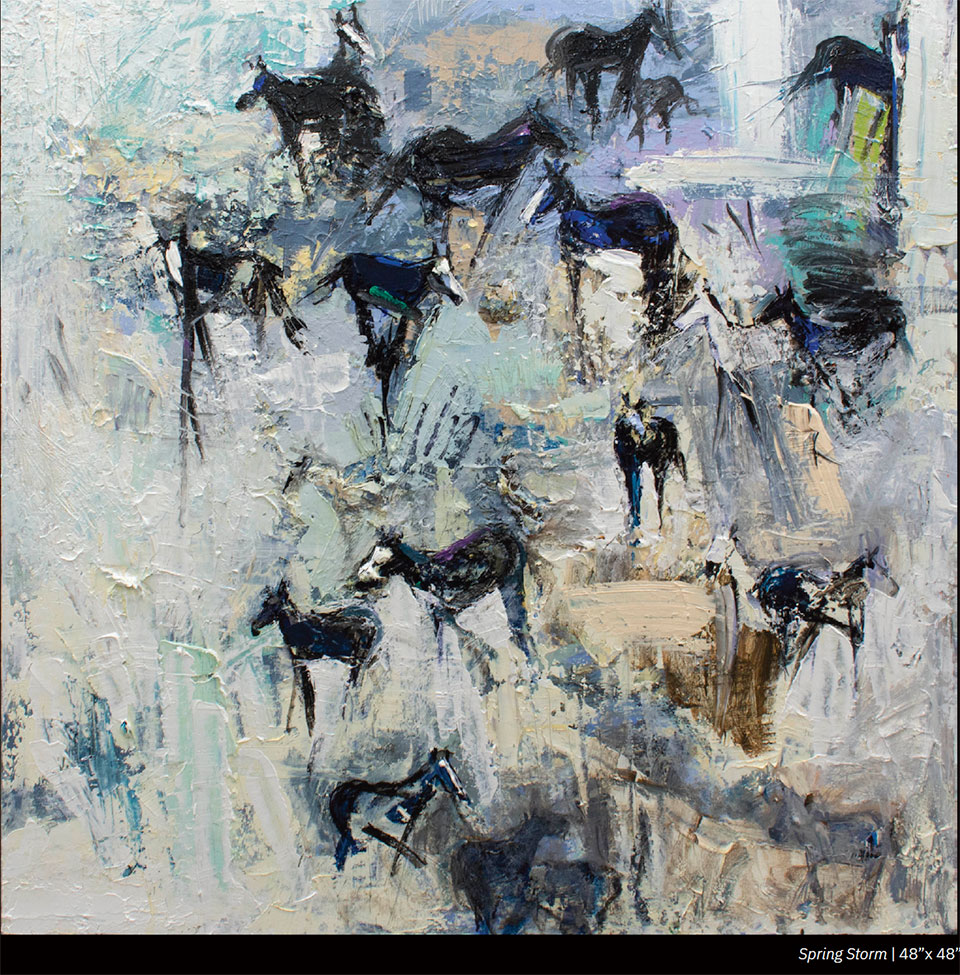
Moser notes that Fercho has an uncanny ability to think structurally about her work.
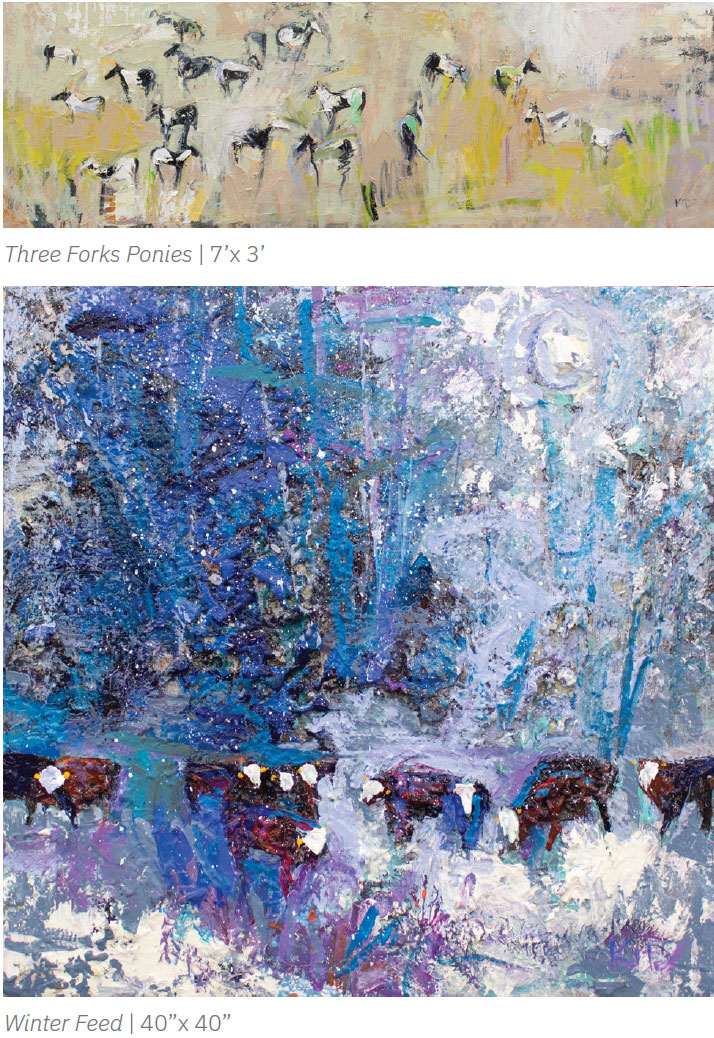
“She has an architectural concept of her work—when we got her ten-inch by six-foot pieces they became part of the interior structure of the room,” Moser says. “They’re still art, but they sort of transcend just being wall art. It’s not accidental, she knows interiors.”
Major art collectors see this and appreciate the way Fercho can be a bridge from their inherited older artwork and to their newer art, a kind of old world/new world connection.
“I’ve been around long enough to know that everything changes. When you’re stuck in a niche, life will pass you by unless you can adapt. I started painting things I knew because all these great painters that I grew up with did. I never thought I’d ever be able to sell the
paintings that I loved doing.”
–Kira Fercho, Artist
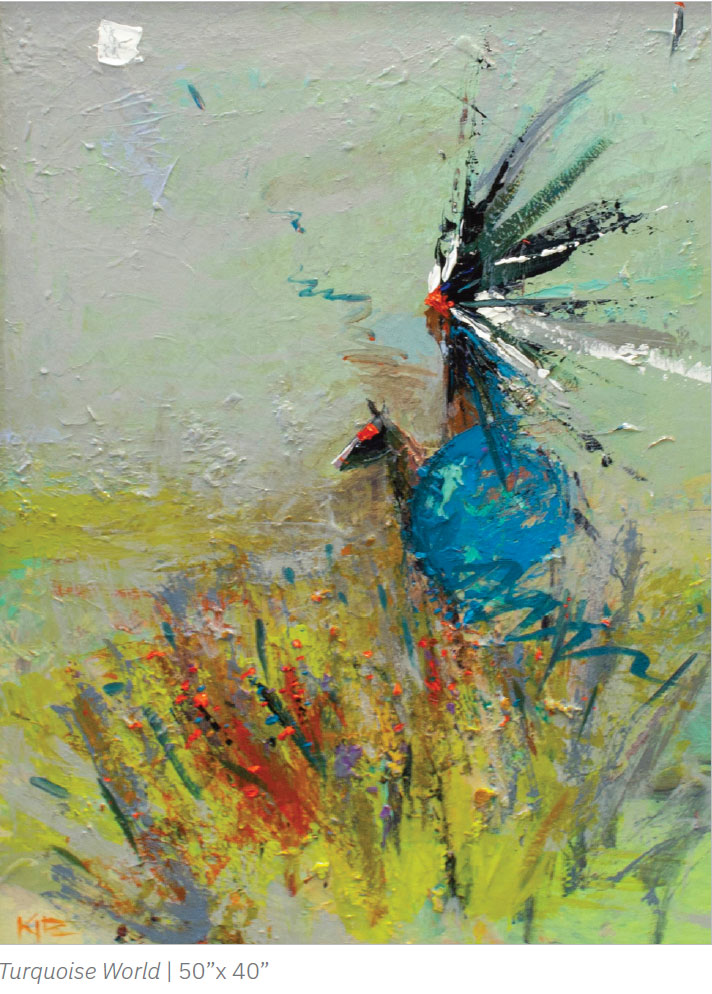
Fercho learned to paint in the old-school style, with paint, drawing, charcoal sketches, nudes, and a big dollop of art history. Over the years all of that has melded into her current body of work.
“It’s about the experience with the painting, not about selling the work, while still making a living doing this,” Fercho says. “I’ve been around long enough to know that everything changes. When you’re stuck in a niche, life will pass you by unless you can adapt. I started painting things I knew because all these great painters that I grew up with did. I never thought I’d ever be able to sell the paintings that I loved doing.”
Through the hard work, the constant challenge to herself, and an eye for a fresh perspective, Fercho has crossed the fine art boundaries of contemporary and Western art, ready for whatever comes next.
